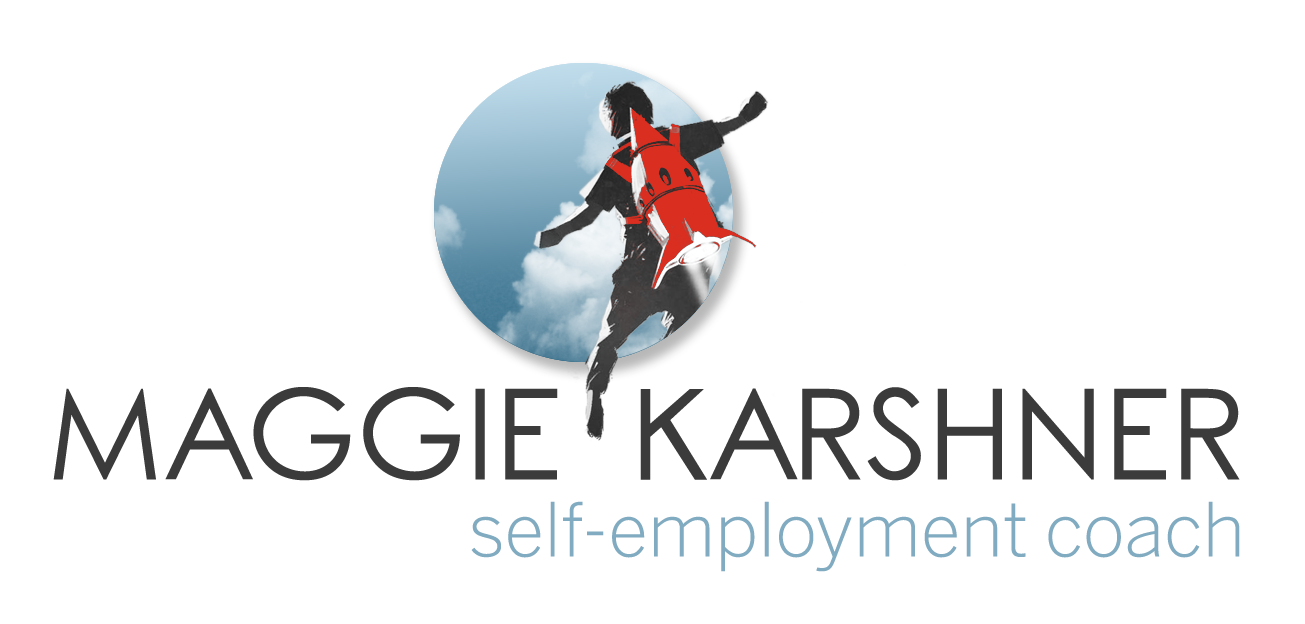Salesmanship: the Good, the Bad, and the Absent
/I hear often from clients that they don't want to annoy their friends with sales pitches. I totally get it, none of us want to be "that guy" and when you're starting a business it can seem like it's all your friends must be hearing from you. There's a fine line between good salesmanship and being obnoxious.
But there's also a problem with not being salesy enough and it's not merely that your revenue will suffer, it's that your customer service will also suffer. There's a reason why people WANT to work with a sales person. Salespeople serve a very real function, and if they're ethical and interested in the customer getting what the customer will be most satisfied with, then the customer wins. (And so does the sales person! ...and so does the business!)
Think about the last time you were at a store and had a neutral or good experience with a staff person. Maybe you needed help finding something, or really appreciated the way you were greeted. When you have a question that fails to be answered by packaging or displays, turning to a sales person is the natural next step. If you don't have that sales person to turn to, you get frustrated, and you're likely to abandon the purchase you're trying to make.
The Spectrum
There are two extremes to how a sales person can go wrong, and a sweet spot in the middle that is ideal. In that sweet spot, the sales person's goal is to assist prospective customers in moving through their sales journey smoothly, and prevent the customer from abandoning their sales journey due to a trivial reason.
On one extreme of bad salesmanship, you have the pushy sales person. This person seems to think their goal is to shove customers along their sales journey and coerce them into not leaving their sales journey. While this may result in a sale, the customer often dislikes the experience and may come to regret their purchase. This leads to fewer repeat customers. This is also what most people seem to fear when they think of trying to be more salesy.
At the other end of the spectrum you have the absentee sales person. This person neglects their customer and doesn't support them in their sales journey. This not only means they loose out on a sale, but the customer's needs were not met and they may feel frustrated. I don't know if people are afraid of this end of the spectrum, but they're definitely afraid of the lack of business it results in!
Finding the Balance
So how do we strike the balance and find the middle, without overshooting to either extreme? Let's examine a few key aspects of salesmanship, how they can be done right, and how they can be done wrong. The techniques I'll discuss are: raise awareness, streamline, reflect, remove barriers, and trust.
Raise Awareness
One key thing a sales person does is introduce the customer to something they didn't know. This might be a product or feature they didn't know about, or a current sale or promotion going on. In your business, you want to make sure that people know what it is you do, and how it may positively influence them. This means you're going to have to find ways of weaving this into conversation and you're likely going to feel like you're repeating yourself as you say the same thing in front of different people. (Even saying the same thing again in front of someone can be helpful since humans rarely latch on to 100% of what they hear.)
Sales people go too far with raising awareness when they are pushy with this information or insist the customer needs something when they feel the opposite. If a sales person tells a prospective customer about something the customer doesn't care about, it's the sales person's role to notice the customer's disinterest and move on to another topic or, even better, pose a question that will help the sales person better understand where they could direct the conversation. Similarly, the sales persons should notice a customer's discomfort and adjust to improve the customer's comfort. (This can include leaving the customer alone! It's not "ruining a sale" to give a customer the space they need!)
Streamline
Another key aspect of good sales is to make a streamlined easy process for the customer. This could be having clear information freely available, or having a scheduling or payment system that's easy to use. Most of my clients see this come up in instances where they need to articulate what the immediate next step is for the customer; a clear path forward and a reminder of what comes next makes the sales journey easier for the customer.
At times sales people can over do it on the streamlining. They skip steps that leave the customer feeling confused, or they neglect to correctly notice that the customer is unready to move to the next step in the sales journey. It's easy enough to course correct if either of these happen by taking a step back in the sales journey and checking in with the customer. Applying pressure is absolutely the wrong move in this instance and will cause the customer to leave the sales journey.
Reflect
A good sales person helps the customer navigate the customer's own unique sales journey. This is achieved by articulating to the customer what the sales person is observing. Inquisitive statements like "it seems like you're unsure?" or "it seems like this makes you happy?" and then letting the customer agree or offer a correction. This often feels like a relief to the customer if they've been unable to notice this within themselves, and even if they were aware, customers are often flattered that they're interests and feelings are being acknowledged.
The technique of reflecting goes wrong when the sales person tells the client what they want the client to be feeling rather than reflecting what's really there. In effect this is a con. A customer who's unsure of themselves may come to believe that's how they feel, only to discover it's not true after the sale is complete. While it may result in a sale today, the sales person misses out on any repeat business and any referrals. Any sales person sincerely interested in customer satisfaction is unlikely to make this mistake.
Remove Barriers
The previous three facets (raise awareness, streamline, reflect) all help support a sales person's ability to remove barriers for the customer. A sales person who can discern the customer's desires, and be inquisitive about the customers apprehensions, is then well poised to know what barriers exist and how to best remove them. Finding out a customer's concerns about price, scheduling, services or products and then addressing them efficiently helps remove the barriers the customer faces on their sales journey.
Removing barriers back fires when the sales person attempts to remove barriers that aren't there, or attempts to remove barriers but actually puts more in there place. Both of these are usually very annoying for the customer, and sometimes that leads to them not completing the sale. For example, if a customer is unconcerned by the price, but then the sales person starts describing payment plans or sliding scale, this is the opposite of removing a barrier. This is also why it's best to give people the next most immediate action they can take. For example: "BUY NOW" button on a website, or "if you're ready to book your appointment, I'm available next Tuesday at 10am, Wednesday at 1pm or Thursday at 4pm."
Trust
The fundamental to any sale is trust. There must be sufficient trust between the customer and the business/sales person that the customer believes they'll receive what they want to their satisfaction for the agreed upon price.
A sales person can think of themselves as a steward of this trust. The sales person seeks to cultivate and grow trust through honest means. The marker of the most distasteful sales people is that they manipulate trust by building it and subsequently eroding it by being dishonest or less than ethical. Building trust is straight forward; it's as simple as saying what you're going to do, and then doing it. Every time to say you're going to do something and something else happens in reality, that erodes trust. Regardless of how consistent you are naturally, offering clear expectations and transparency in your process improves trust and leads to more sales and better business.
Good Sales Techniques vs. Good Person Techniques
Being a good sales person is not that much different than being a good person. In the same way that you listen, respond, volunteer information and are respectful to a friend, the same holds true for being a good sales person. In sales you're often having the same conversation repeatedly, so it might feel redundant to you. And if you keep in mind to be responsive and respectful to your customer, you'll never be a slimy sales person.




